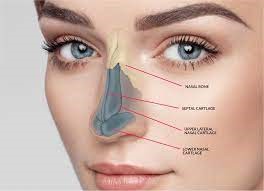
If you're considering rhinoplasty, one of the primary concerns on your mind is likely the cost associated with the procedure. Rhinoplasty, commonly referred to as a "nose job," is a surgical procedure aimed at altering the shape, size, or function of the nose. While the benefits of rhinoplasty can be life-changing, understanding the factors that contribute to its cost is crucial for making an informed decision.
Factors Influencing Rhinoplasty Costs
Several factors come into play when determining the cost of rhinoplasty. These factors vary depending on individual circumstances and the complexity of the procedure. Let's delve into each of these factors in detail:
1. Surgeon's Expertise and Experience
The skill and experience of the surgeon performing the rhinoplasty greatly influence the cost. A highly experienced and reputable surgeon may charge higher fees due to their expertise and track record of successful outcomes. It's essential to choose a board-certified plastic surgeon with specialized training in rhinoplasty to ensure optimal results.
2. Types of Rhinoplasty Procedures
The type of rhinoplasty procedure you undergo can also impact the overall cost. Open rhinoplasty, which involves making an incision across the columella (the strip of tissue that separates the nostrils), tends to be more complex and may be priced higher than closed rhinoplasty, where incisions are made inside the nostrils. Revision rhinoplasty, performed to correct previous unsuccessful nose surgeries, often requires additional expertise and resources, leading to increased costs.
3. Geographical Location
The cost of rhinoplasty can vary significantly depending on the geographic location of the surgeon's practice. Procedures performed in major metropolitan areas or affluent regions may command higher fees compared to those in smaller towns or rural areas. Factors such as demand, competition, and the cost of living in a particular area can influence pricing.
4. Hospital or Surgical Facility Fees
In addition to the surgeon's fees, patients must consider the cost of the surgical facility where the procedure will take place. Fees associated with operating rooms, equipment, and support staff can contribute to the overall expense. Higher-quality facilities with advanced technology and amenities may charge higher fees.
5. Anesthesia Fees
Anesthesia is a critical aspect of rhinoplasty surgery, ensuring patient comfort and safety throughout the procedure. Anesthesia fees are typically based on the type of anesthesia used, the duration of the surgery, and the qualifications of the anesthesiologist or nurse anesthetist. Patients should inquire about anesthesia fees during their consultation to avoid any surprises.
6. Pre and Post-Operative Care
Before undergoing rhinoplasty, patients may require pre-operative consultations, medical tests, and evaluations to ensure they are suitable candidates for the procedure. Additionally, post-operative care, including follow-up visits and medications, is essential for monitoring recovery and addressing any concerns. These pre and post-operative services may be included in the overall cost of rhinoplasty or billed separately.
7. Additional Procedures or Revisions
Some patients may require additional procedures or revisions to achieve their desired results or address unforeseen issues. These secondary procedures can incur additional costs and should be discussed with the surgeon during the initial consultation. Factors such as the complexity of the revision and the extent of the adjustments needed can influence the final cost.
Financing Options
Despite the upfront costs associated with rhinoplasty, many patients find ways to manage expenses through financing options. Some plastic surgery practices offer payment plans or financing arrangements to help patients afford the procedure. Additionally, some insurance plans may provide coverage for rhinoplasty if it is deemed medically necessary to correct breathing difficulties or congenital deformities. Patients should explore all available financing options and insurance coverage before making a decision.
Tips for Managing Rhinoplasty Costs
Research and compare prices from multiple surgeons and facilities.
Discuss pricing openly with your surgeon to understand what is included in the quoted fee.
Inquire about payment plans, financing options, and insurance coverage.
Consider the long-term benefits of rhinoplasty when evaluating the cost.
Conclusion
Deciphering the expenses associated with rhinoplasty requires careful consideration of various factors, including the surgeon's expertise, the type of procedure, geographical location, and additional fees. By understanding these factors and exploring financing options, patients can make informed decisions about their rhinoplasty journey.
FAQs
What is the average cost of rhinoplasty?
The average cost of rhinoplasty varies widely depending on several factors, including the surgeon's experience, the complexity of the procedure, and the geographical location. On average, rhinoplasty costs range from $5,000 to $15,000.
Does insurance cover rhinoplasty?
In some cases, insurance may cover rhinoplasty if it is deemed medically necessary to correct breathing difficulties or congenital deformities. However, cosmetic rhinoplasty procedures are typically not covered by insurance.
How long does it take to recover from rhinoplasty?
The recovery period for rhinoplasty varies from patient to patient but generally takes about one to two weeks. Swelling and bruising may persist for several weeks, gradually improving over time.
Are there any risks associated with rhinoplasty?
Like any surgical procedure, rhinoplasty carries some risks, including infection, bleeding, and adverse reactions to anesthesia. However, these risks can be minimized by choosing a qualified surgeon and following post-operative instructions diligently.
Can I undergo rhinoplasty if I have breathing difficulties?
Yes, rhinoplasty can be performed to correct structural issues that affect breathing, such as a deviated septum or nasal obstruction. In such cases, rhinoplasty may be covered by insurance as a medically necessary procedure.





